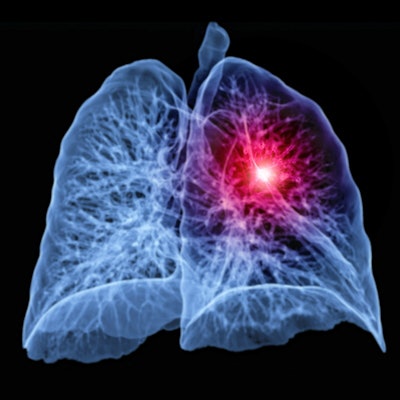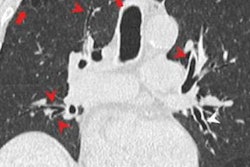
Among people who underwent CT lung cancer screening in a new research study, only 22% came back for annual follow-up exams, according to a paper published on October 10 in the Annals of Internal Medicine.
The findings indicate that while more than 90% of individuals who are screened for lung cancer with low-dose CT meet the criteria set in 2013 by the U.S. Preventive Services Task Force (USPSTF), adherence to annual follow-up remains low, and more encouragement is needed to spur follow-up, wrote a team led by Dr. Gerard Silvestri of the Medical University of South Carolina in Charleston.
"Approximately 91% of persons who had lung cancer screening met USPSTF eligibility criteria," it noted. "[But] adherence to annual follow-up screening was poor, potentially limiting screening effectiveness."
In 2013, the USPSTF released its landmark lung cancer screening recommendation for high-risk individuals, mostly current and former smokers. Two years later, the U.S. Centers for Medicare and Medicaid Services (CMS) made lung cancer screening a covered benefit and instructed facilities to report screening data to an approved database. Currently, the only CMS-approved archive of this kind is the American College of Radiology's (ACR) Lung Cancer Screening Registry.
In 2021, the USPSTF expanded the pool of people eligible to screen for lung cancer, lowering the starting age from 55 to 50 and the number of required smoking pack years from 30 to 20 and therefore almost doubling the size of the population of those eligible for screening.
But how effective were those 2013 guidelines? Silvestri and colleagues sought to determine how many individuals who underwent CT lung cancer screening after 2013 and before 2021 met the USPSTF criteria and to assess the rates of adherence to annual follow-up screening (defined as having another CT exam within 11 to 15 months of the initial scan).
The team analyzed data from 2015 to 2019 from more than 3,000 facilities that reported to the ACR registry -- which created a cohort of screened patients of 1.2 million -- and compared these results to data that included 1,257 respondents who met the 2013 USPSTF criteria taken from the 2015 National Health Interview Survey, or NHIS (a survey conducted by the Centers for Disease Control and Prevention).
The group found that among 1.2 million people screened and reported in the ACR registry, 91% met the 2013 USPSTF criteria. Compared to NHIS individuals, these people were more likely to be female, older, and current smokers. The investigators suggested that the first two factors could have to do with women's tendency to take advantage of preventive healthcare services compared to their male counterparts and the fact that Medicare coverage begins at age 65.
Yet when it came to following through on annual screening, the rate for this ACR registry cohort was only 22.3%. When the investigators extended the follow-up period to 24 months, the percentage increased -- by 12%, for a total of 34.3% -- but still, the finding prompts concern.
"Adherence is essential ... [and] decreased adherence reduces cost-effectiveness and diminishes mortality benefits," the team wrote. "Providers should emphasize that low-dose CT is not a 'one and done' test."
How can screening uptake and compliance with annual screening be improved? Silvestri and colleagues offered a few ideas.
"To improve uptake, adherence, equitable delivery, and effectiveness, coordinated policy-level, health system, and clinician efforts are needed," they wrote.
An accompanying editorial written by Karina Davidson, PhD, of Northwell Health in New York City, made an even more specific appeal.
"The best way ... to prevent this devastating disease is [for primary care physicians] to help patients avoid smoking and to help those who are currently smoking to quit," Davidson wrote. "Colorectal and breast cancer screening have national education and media efforts, high public awareness, and extensive adherence and awareness among primary care clinicians. Many patients benefit from these other routinized and familiar cancer screening practices. Those whose lives can be saved from lung cancer by annual screening deserve no less."



















